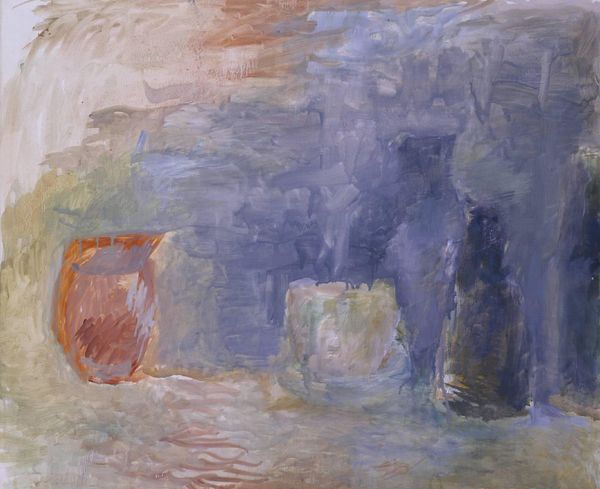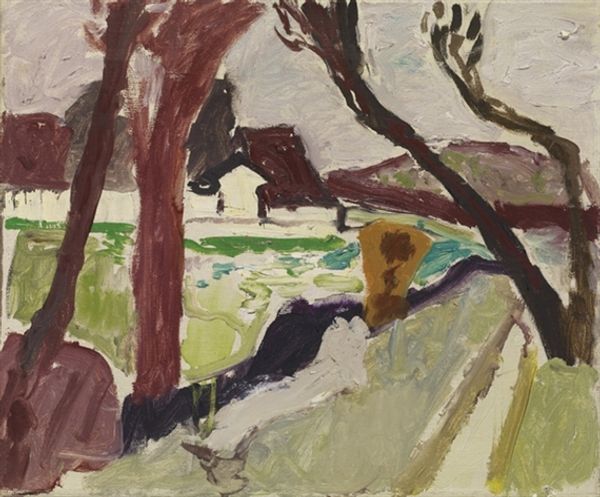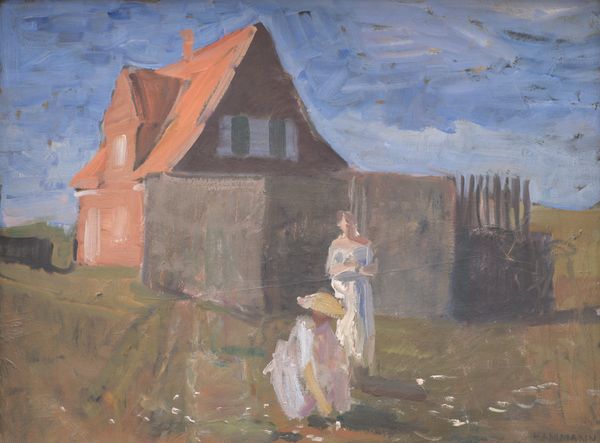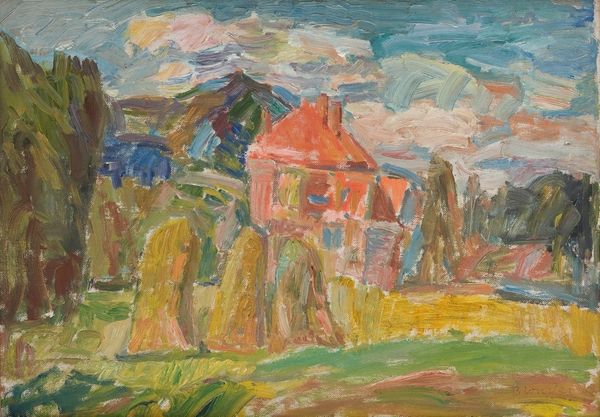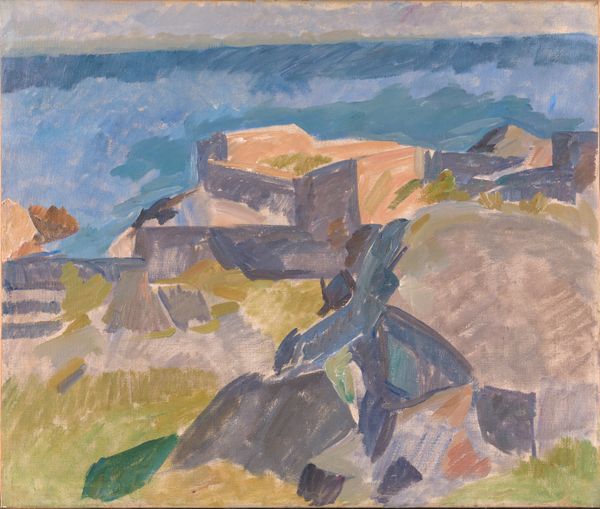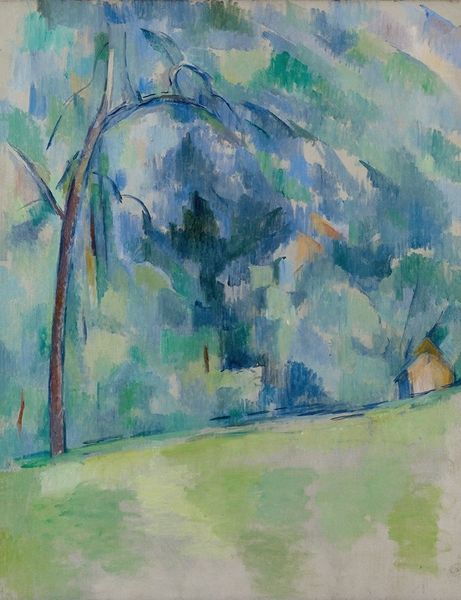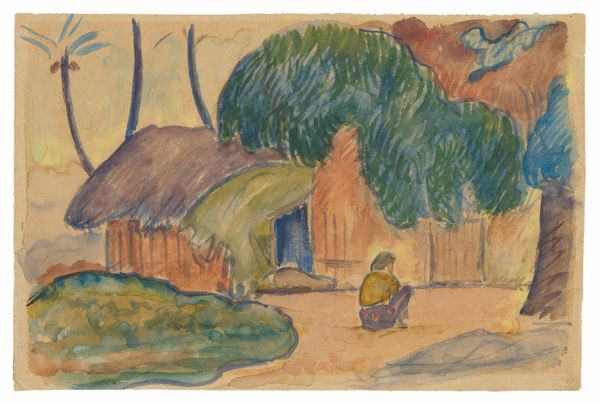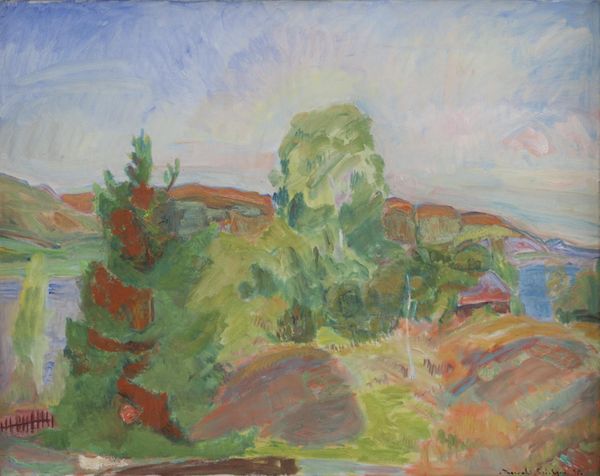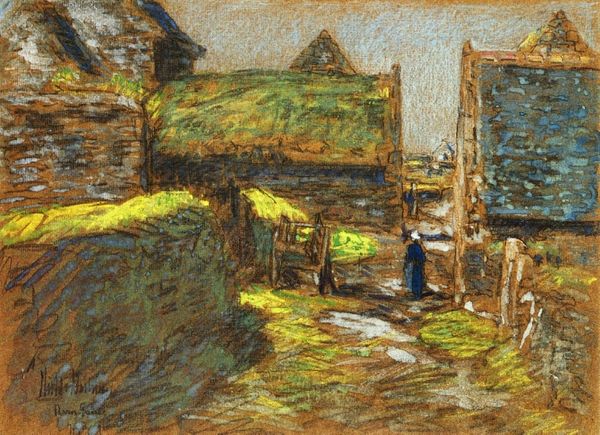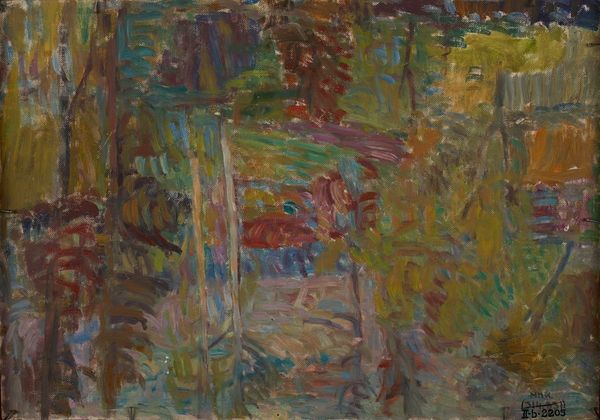
canvas
#
abstract painting
#
canvas painting
#
possibly oil pastel
#
oil painting
#
canvas
#
acrylic on canvas
#
underpainting
#
painting painterly
#
watercolour illustration
#
watercolor
#
fine art portrait
Dimensions: 99 cm (height) x 116 cm (width) (Netto), 101.8 cm (height) x 119.6 cm (width) x 4 cm (depth) (Brutto)
Curator: This is "Waiting," a painting created between 1893 and 1934 by the Swedish artist Carl Kylberg, currently housed at the SMK, the National Gallery of Denmark. The artwork presents us with an evocative, if somewhat muted, landscape scene on canvas. Editor: My immediate reaction is one of loneliness. There's something almost spectral about those two figures standing on the green, isolated against this strangely dreamlike landscape. The color palette also enhances that feeling--bleached tones that mute reality. Curator: That's a fair assessment. The painting emerged during a period of great social and political upheaval. Kylberg, although somewhat removed from the most avant-garde circles, was certainly aware of the anxieties of his time. His work often carries the weight of those collective anxieties, perhaps speaking to a societal "waiting" for some resolution or change. Editor: Yes, waiting…The pair in the foreground—one form colored a sad blue, the other, red—appear to be standing by what looks like a shore of a sea, or some body of water; there’s a strong vertical pillar with an open door that stands out in the landscape, almost suggesting a threshold, as they await or anticipate. Red can indicate intense emotions and the somber blue can invoke reflection. Curator: That blue is a common symbol that you find repeatedly within artworks that reflect societal isolation and the challenges individuals encountered within burgeoning, impersonal urban settings. The rise of industrialization also had an impact; artists began to explore themes that resonated deeply with these feelings of isolation and disconnection from the natural world. Editor: Precisely. Look at how Kylberg uses color and form—almost primitive. But not naive, I believe the simplicity, is a conscious stripping-away of detail to get to the essential emotional core: anticipation, loneliness, the slight alienation when pondering life and decisions to be made. The symbols almost operate on a subconscious level. Curator: It seems right. Kylberg's technique reflects a desire to strip away the superficial to expose raw feeling and it offers viewers a canvas for their own emotional reflections during times of significant cultural change. Editor: Ultimately, in our search for patterns and significations, it shows how this one specific image allows access to understanding art as the result of individual imagination but still inextricably entwined with cultural meanings. Curator: It certainly encourages one to reflect on what one may be waiting for in their own time, against the backdrop of today’s world as our understanding of life’s deeper issues takes shape.
Comments
No comments
Be the first to comment and join the conversation on the ultimate creative platform.
